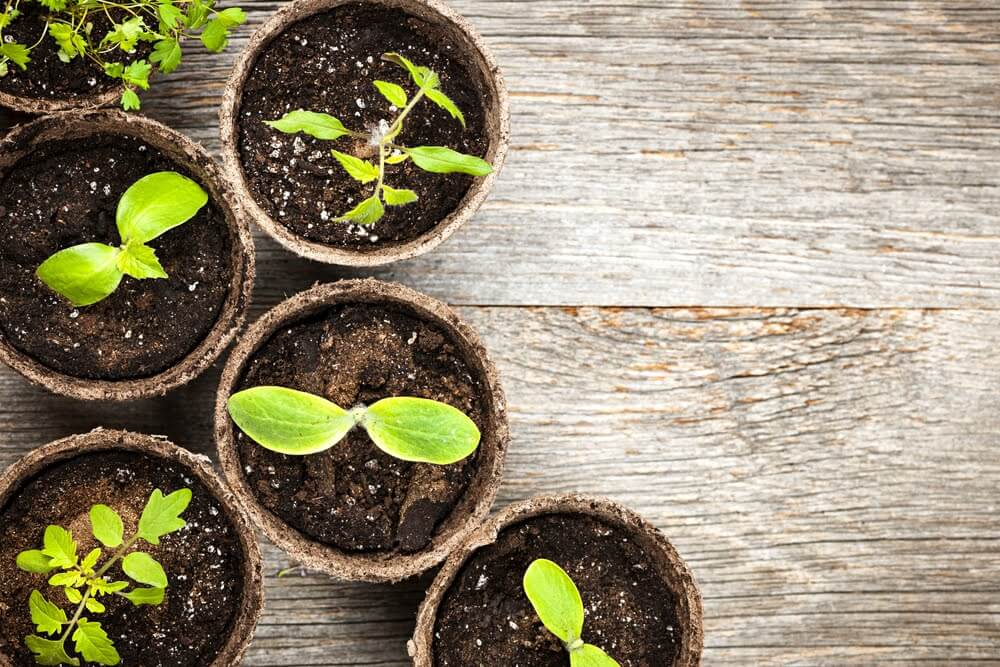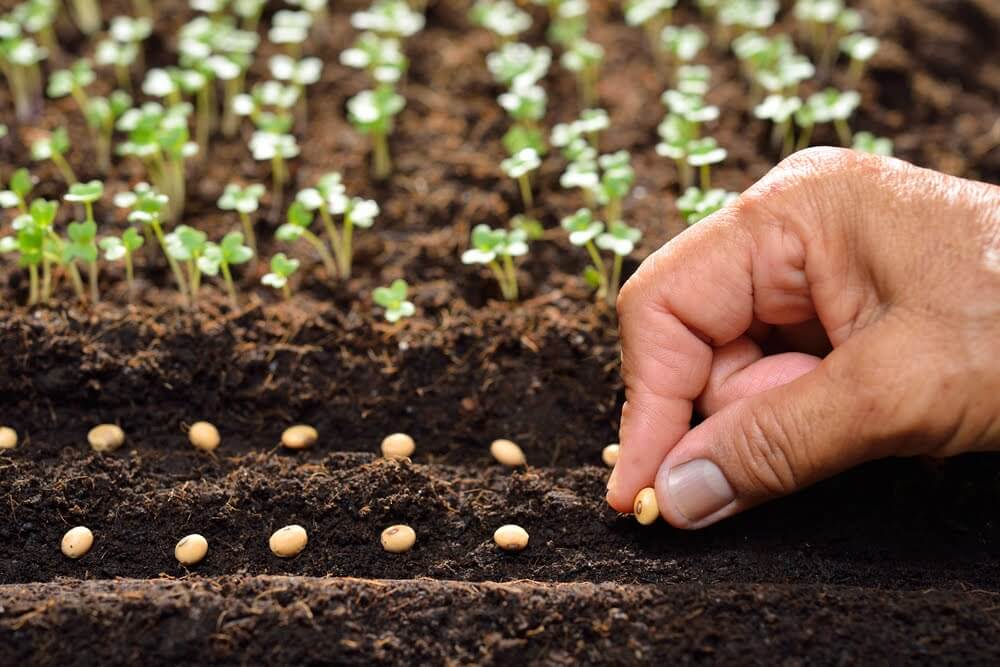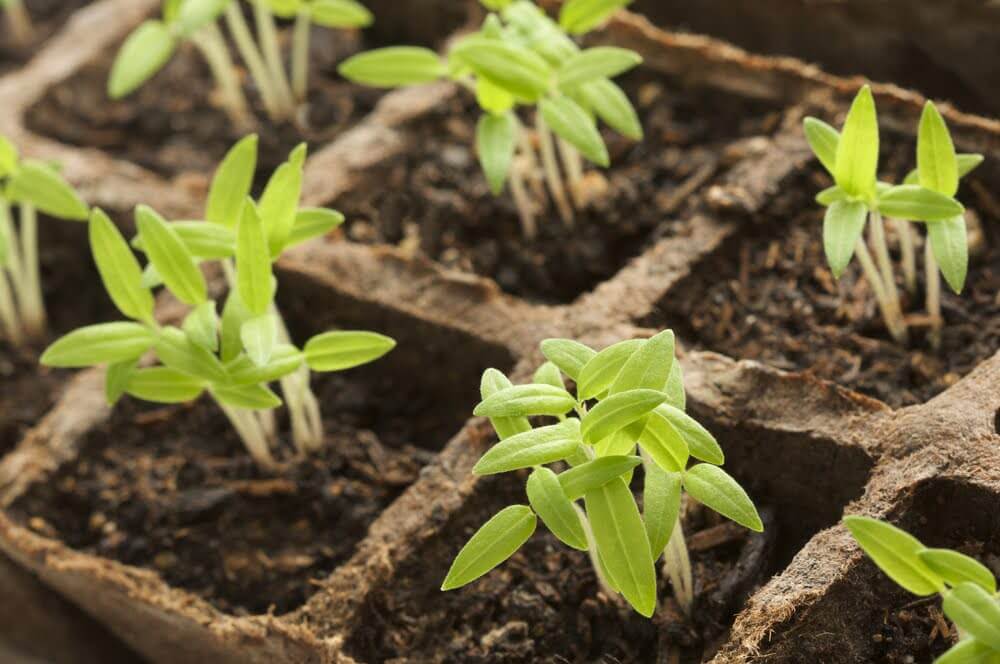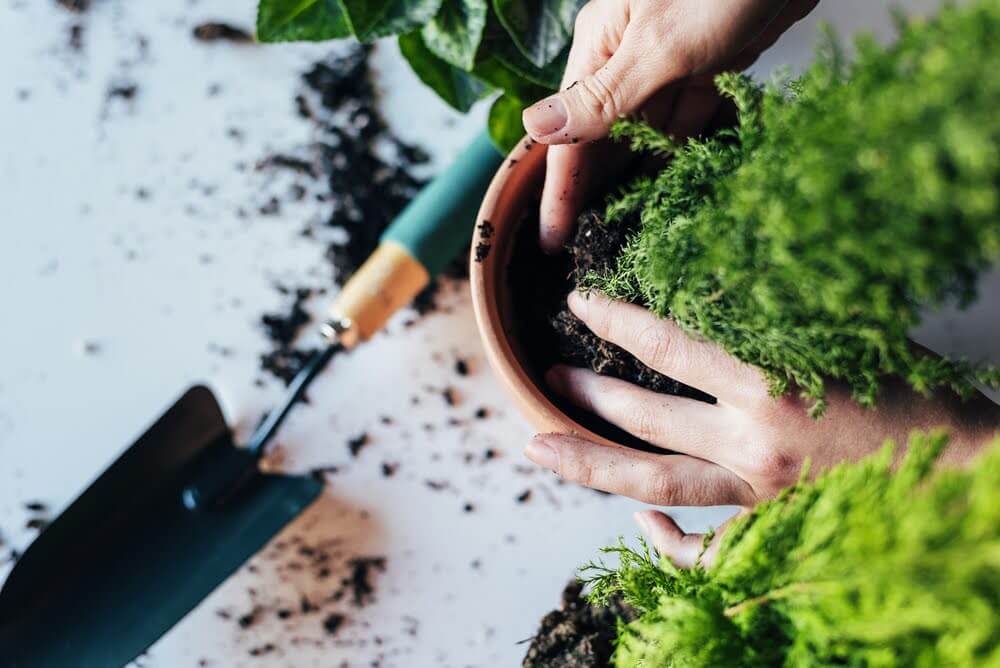A Guide to the Benefits and Drawbacks of Seeds vs. Plant Starts vs. Sowing
February 23, 2024
As the weather begins to warm and spring thaws through the cold, avid and first-time gardeners are preparing their yards and homes to welcome a new touch of green. With the number of ways one can tackle introducing new greenery, though, it can be difficult to find the best method for planting.
Thankfully, we have some helpful recommendations. Read our blog to see what method for plant preparation will work best for you, whether it be seeds vs. plant starts vs. sowing. We’ll even provide suggestions for gardening tools and what Stauffers can provide to get you started!

Seed Sowing
The first of the three methods we will be covering in this blog is seed sowing. This is likely the most common method, involving taking seeds you have purchased/collected and planting them directly into the ground.
Also known as direct sowing, the best time to utilize this method is when it is warm outside, around the time spring starts (late April/early May). Depending on the type of plant, some are even good to wait until the early summer to plant.
Try to avoid planting before it gets too hot, however. Unless you are able to keep an eye on the plants and monitor how much sun and water they receive, pick a time when you know they will have ample shade and moisture.
Be sure to review the seed packets you use for accurate planning of its growth. After all, the first few weeks of seed germination are important to monitor.
Pros of Seed Sowing
- Wide Selection of Seeds – Since your seeds haven’t been grown yet, there is a large variety to choose from. Seed packets are very easy to find at most garden stores, and aren’t too expensive to purchase.
- Good Involvement with Growing Plants – If you are someone who enjoys watching your plants grow from seedling to full beauty, this method is perfect for your tastes. Taking the time to work with a plant can be a rewarding experience, especially seeing its full growth cycle.
- Less Need for Caution When Planting – Seeds sown are typically scattered in the soil when planted. As long as you choose a location that has plenty of space and are careful about keeping certain plants close to one another, your greenery should thrive.
Cons of Seed Sowing
- Lengthy Growth Period – Since you are not starting from an already sprouting seed or plantling, you will have to wait several weeks to months for your seed to start growing. This can take a while, and the seed must be carefully tended to during this time.
- Cautious of Environment – Because your plants will be mainly outdoors, you have to be mindful of what’s there and what can harm your plants. Weather, wildlife, and other unpredictable factors can influence/damage your plant’s growth, so be cautious with them.
- Large Space for Large Seed Numbers – Many larger plants and vegetables require a greater amount of space to grow, especially when scattering a higher number of seeds. There is also the possibility that not all seeds will sprout, so it’s important to plant several seeds early on to increase the chances of growth.
Supplies Recommended
- Fertilizer
- Rake/Hoe for digging through the dirt
- Method for watering
- Small shovel/trowel for digging holes
- Markers for plants
Seed Recommendations
There is a vast variety of plants, flowers, and vegetables that you can plant. Just be sure to plan ahead for the amount of space your chosen seeds will need as they mature.
A couple of popular options for flowers include marigolds, zinnias, and sunflowers. You can’t go wrong with annual or perennial flowers, so choose what you feel will liven up your yard or garden.
For vegetables, you can’t go wrong with classics such as tomatoes, carrots, lettuce, and a large variety of herbs. Again, you can’t go wrong with your favorites, so take advantage of the area you choose to set up in and plant vegetables you enjoy using the most in your kitchen.
How to Sow Seeds
- Prepare a large area of soil for your plants. It should be well-drained, warm from frequent sunlight exposure, and cleared of any weeds.
- If you are planting small seeds, rake through the soil to loosen the dirt and scatter your seeds.
- If you are planting larger vegetables and plants, create rows of holes that are around a half inch to an inch deep with a couple of inches of space in between (depending on what your seed packet recommends).
- Rake/Cover your seeds, and water thoroughly.
- Monitor for the next few weeks, ensuring that weeds don’t sprout, the seedlings don’t crowd each other, and that they are watered every few days.
Seed Starting
The next method we’ll go over is seed starting. This may sound familiar to the previous section, but the main difference in seed sowing vs seed starting is that seed starting starts the seeds growing indoors (which is why it’s sometimes called indirect sowing).
Rather than starting the growth of the plants in the ground, seeds are placed in a seed starter tray (or simply a tray like an egg carton) that can hold small handfuls of dirt. The tiny seeds are then placed in their “cubbies” and left to grow until they are large enough for transfer.
Seed starting offers more flexibility for when the growing can start. Typically, it is best to start the planting and growing process in mid-late winter (late February or early March). That way, they will be ready for transfer once spring/summer arrives.
Pros of Seed Starting
- Little to No Worry About Weather/Environmental Factors – Keeping your started seeds indoors in a warm room where they can get plenty of sunlight and water is important. But otherwise, you won’t have to worry about competition from other plants, or having to prep for sudden changes in the weather or hungry critters.
- Easy Management – You get to decide what types of seeds to grow and how you see best that they continue to develop. You are in control of what will help them best, whether it be providing nothing but organic material or your own methods.
- Simple Transfer – When your seeds are grown and ready to be moved, all you have to do is carry your tray and move your seedlings from their pockets into the soil. Even if it’s just moving them to a different room, transfer is a relatively easy process.
Cons of Seed Starting
- Size Consciousness – It’s important to be aware of how big or small your seeds will grow to be. The size of the container that will grow them will depend on this. Otherwise, the roots of your plants may become cramped, which can stump their growth/development.
- Dependent on Your Attention – Without any rain or sun, it’s up to you to provide everything your seeds will need. Whether it be just the right amount of water, being moved to a sunny location, or using nutrient-rich soil/fertilizer, you must be attuned to what your plant will need to best thrive.
- Timing is Important – All seedlings are different and will grow at different rates. That’s why you should attempt to calculate when your seed will mature and be ready to be planted. If you start too early, they’ll be ready before the last frost is over, and they won’t survive the frigid temperatures.
Supplies Recommended
- Fertilizer
- Seed starter tray
- Seed starter soils (or whatever fertilizer/soil you can obtain)
- Seed starting kits
- Grow lights for seed starting
- Markers for plants
Seed Recommendations
Make sure to pick plants and vegetables that can not only fit within the small containers you are starting them in, but that they can grow healthy in the indoor environment being provided.
Many of the flowers for sowing seeds can be used, along with a few other popular choices such as geraniums, petunias, and pansies.
For vegetables, try to avoid ones that grow big quickly to give you time to prep and transplant them when the weather is best for their growth. Some popular options include broccoli, onions, cucumbers, and different kinds of squashes.
How to Start Seeds
- Take your seed starter tray or container and fill it with whatever soil you have available (we recommend making sure the soil is damp). Ensure that you pick a good spot for your growth to take place.
- Following your seed instructions, plant the seeds into the soil, deep enough that there is some space above the surface. If there are no instructions for depth, planting them as deep as three times the width of the seed is a good rule of thumb.
- Cover the seeds, and water them so the soil is moist.
- Continue to monitor them, providing plenty of water and using grow lights (highly recommended in place of sunlight).
- Once seeds start sprouting leaves, feed them fertilizer to ensure they obtain the proper nutrients.
- When they are big enough, begin the hardening process and prepare them to be transplanted outdoors.
Planting Starts
The third and final method of planting we’ll be looking at is plant starting.
Again, you may notice some similarities with the other methods. When looking at planting starts vs sowing, the main difference between the two is that planting starts is beginning indoor care with a more developed plantling.
In other words, it’s simply buying a plant that can be transplanted outside sooner rather than taking the time to wait for a seed to grow.
Because of this, these plants can be purchased closer to the warmer seasons, which means that they can be moved to your yard or plot of land relatively soon.
Pros of Plant Starts
- Quick Growth – As mentioned above, because the plants bought are also ready to be transplanted, there is a shorter wait time for them to reach their full potential. So you won’t have to spend weeks closely monitoring them.
- Obtain Your Desired Number of Plants – There’s no need to plant more seeds than necessary, or worry about some not making it. You can purchase the exact number of plants you want/need, and then plan the exact amount of space needed.
- Little Maintenance/Observation – All you’ll really need to do in the beginning is monitor the amount of sun and water they receive. Otherwise, keep an eye on the plant so they do not develop any sudden illnesses or have harmful insects/pests cling to them.
Cons of Plant Starts
- Can be Expensive – Seeds, although requiring more maintenance and longer grow time, are relatively cheap and come in large numbers. Buying an actual plant already grown will definitely cost more, especially ones that are in good condition.
- More Limited Selection – If you’re looking to plant start with a certain kind of tomato or tulip, it may be more challenging to find the exact kind you want. You may even have a harder time finding the desired veggie or flower you want in general. After all, what the market sells depends on the grower.
- Easy to Neglect – Just because starts don’t require much attention doesn’t mean they should remain forgotten until they are ready to be moved outdoors. They are still plants, and need ample sunlight and water. Without them, the start will wilt and not survive long enough to make it to proper soil.
Supplies Recommended
- Fertilizer
- Plant light (if unable to be near sunlight)
- Water source
- Tray for holding plants underneath
Plant Recommendations
The best recommendation for start planting is to pick what will thrive best in your yard/area. Most plants started are grown to be suitable for the area you live in, so there shouldn’t be too many issues when browsing options.
Flowers can include daisies, poppies, and geraniums, and many more. Be sure to plan ahead that they are flowers that will thrive in the seasons you want them to when they fully mature.
As for vegetables, you can’t go wrong with options like peppers, melons, and radishes. Just be sure you will have an adequate amount of space for them outside once they’ve grown to full size (especially larger ones).
How to Start Plants
- Review what your specific plant will need care-wise.
- Transplant your plant (if needed) into another tray/pot if it needs more time to grow and won’t fit in its original container. Ensure that healthy, damp soil is used and that it receives plenty of sunlight/light.
- Water and monitor the plant for the next few weeks until it has reached its desired size and can be transferred.
- Find a suitable location for the plant, and transplant it outside so it will continue to grow and receive proper nutrients, water, and sunlight.
Ready to start shopping for your own seeds, sproutlings, and plants? Check out Stauffers Online Home & Garden selections to find exactly what you’re looking for along with the supplies you’ll need.


